Watch the video to see how to adjust and fit elbow crutches
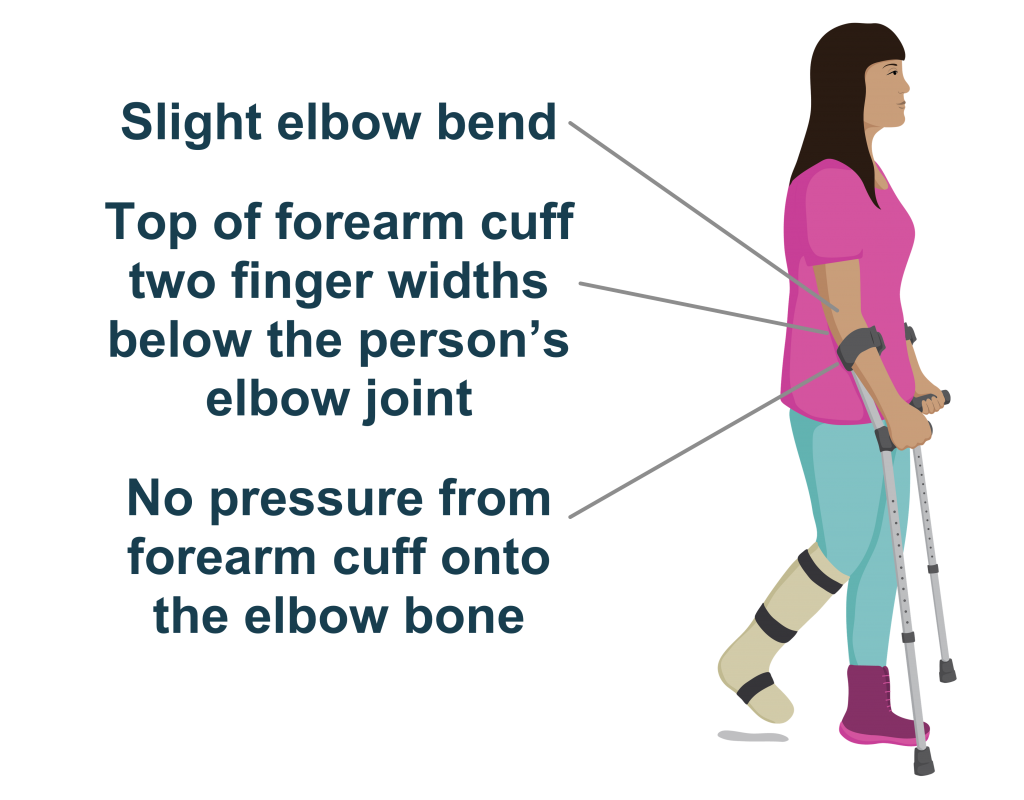
Correct fit: elbow crutches
After adjusting elbow crutches for a person, check they fit as follows:
- The top of the forearm cuff should be two finger widths below the person’s elbow joint
- There should be no pressure from the forearm cuff onto the elbow bone
- With the person standing upright, there should be a slight bend in their elbow
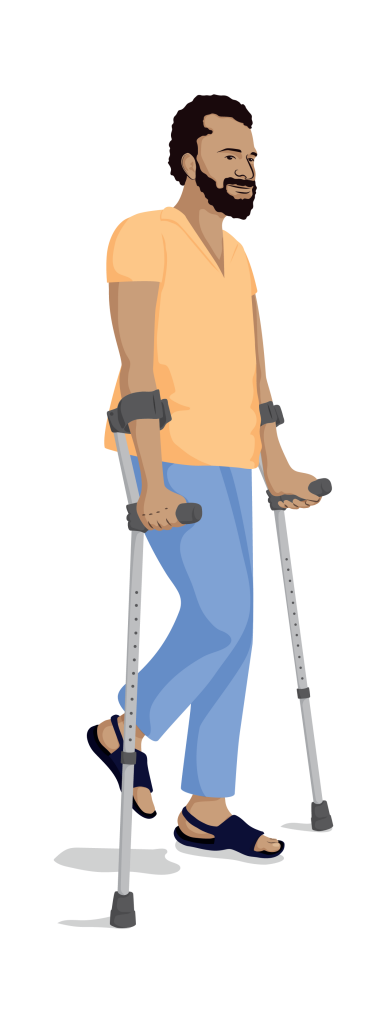
Question
Many elbow crutches do not have an adjustable forearm cuff section. This includes the crutch in the video you just watched.
Tip – click on the question to view feedback
Try a different style or size of forearm crutch.
DO NOT provide an elbow crutch that places pressure on the elbow joint. This could cause discomfort and possibly injury.
Watch the video to see how to adjust and fit axilla crutches
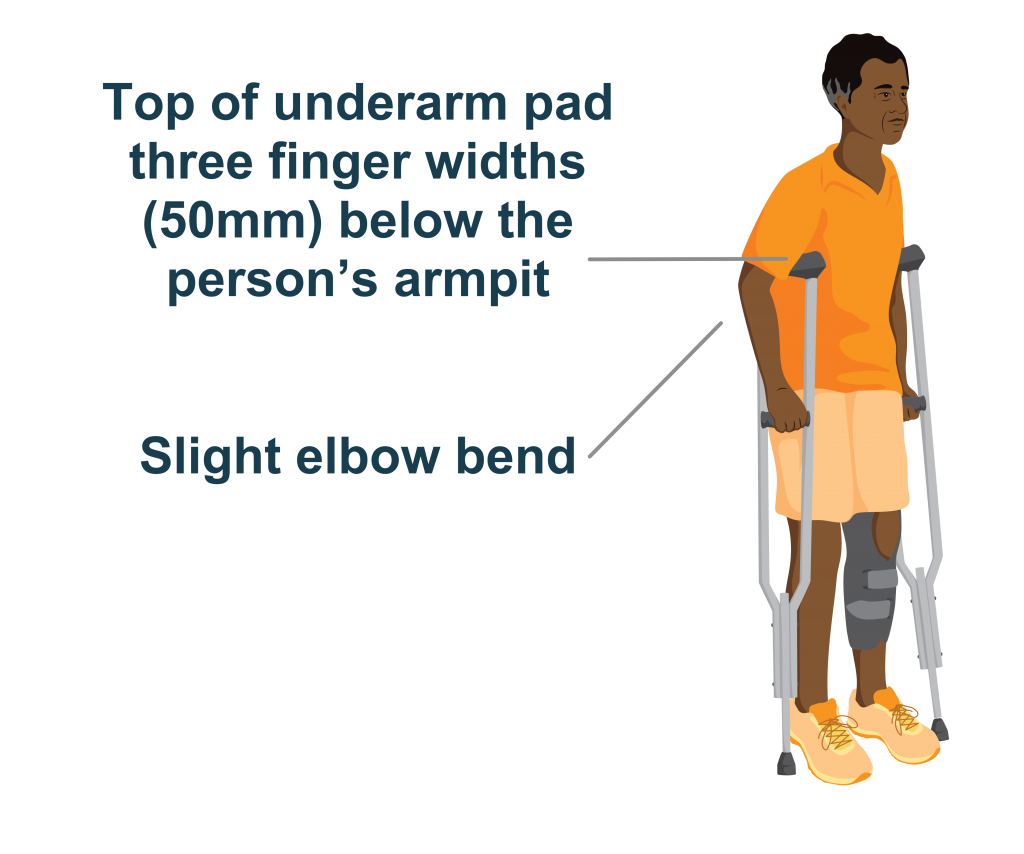
Correct fit: axilla crutches
After adjusting axilla crutches for a person, check they fit as follows:
- The top of the underarm pad should be at least three finger widths (50mm) below the person’s armpit
- When standing upright, the person should have a slight bend in their elbow
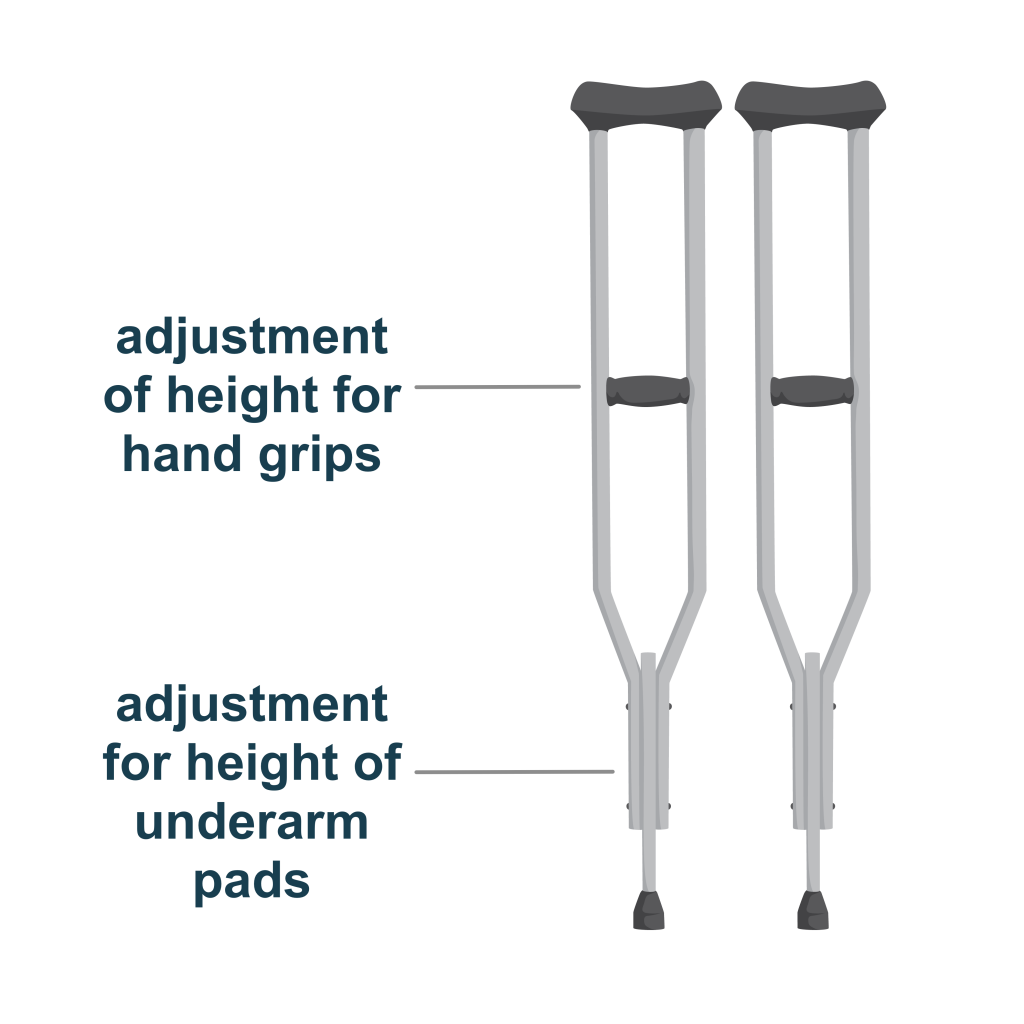
Question
Tip – click on the question to view feedback
The under-arm pad was adjusted first. This is because when the underarm pad is adjusted, the handgrip level also changes. When the underarm pad is in the correct position then the handgrip level can be changed without affecting the height of the underarm pad.
ALWAYS make sure the underarm pad is clear of the person’s armpits and that the padding is in good condition.
Watch the video to see how to adjust and fit a walking frame and a rollator
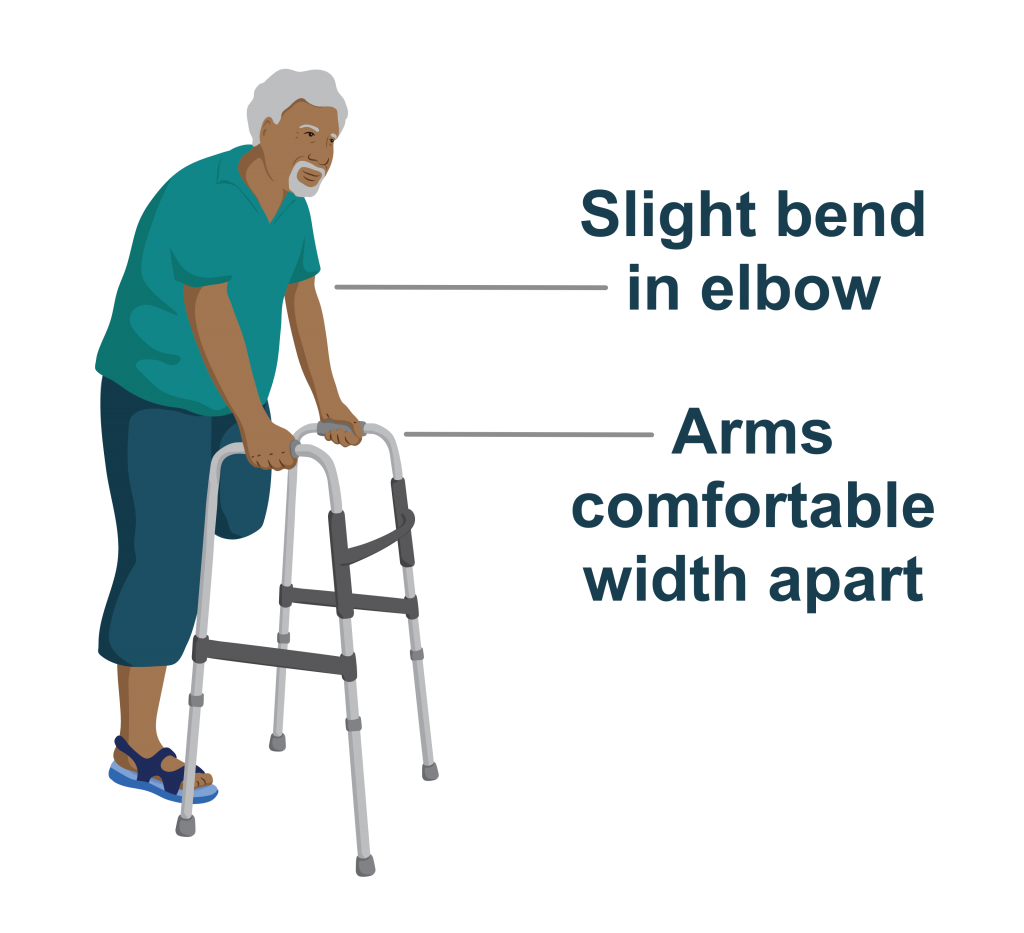
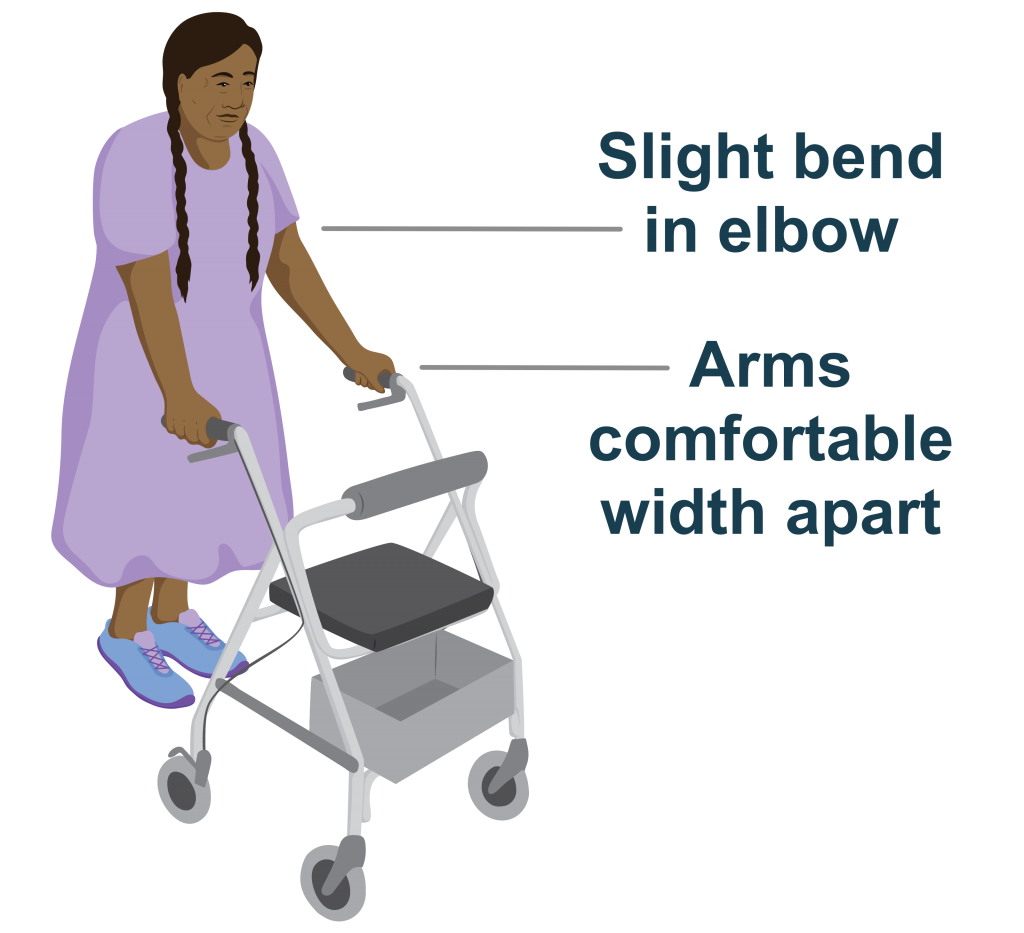
Correct fit: walking frames and rollators
After adjusting a walking frame or rollator for a person, check it fits as follows:
- When standing upright the person should have a slight bend in their elbow
- The width should be comfortable, so that the person’s arms are just a bit wider apart than shoulder width
Some rollators have a seat. If so, check that the seat is at an easy height for the person to sit down and up easily. Adjust if possible.
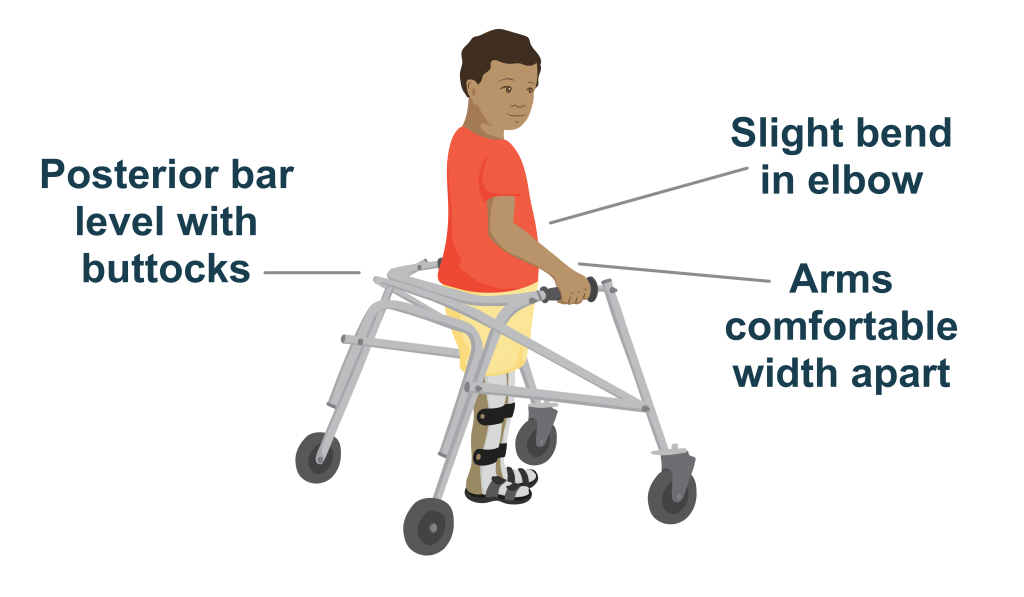
Correct fit: posterior walker
After adjusting a posterior walker for a child, check it fits as follows:
- When standing upright, there should be a slight bend in the child’s elbow
- The width should be comfortable, so that the child’s arms are just a bit wider apart than shoulder width
- The posterior bar level should be level with the child’s buttocks
Fitting a walking stick requires the same steps as fitting an elbow crutch. Watch this video to see each step again
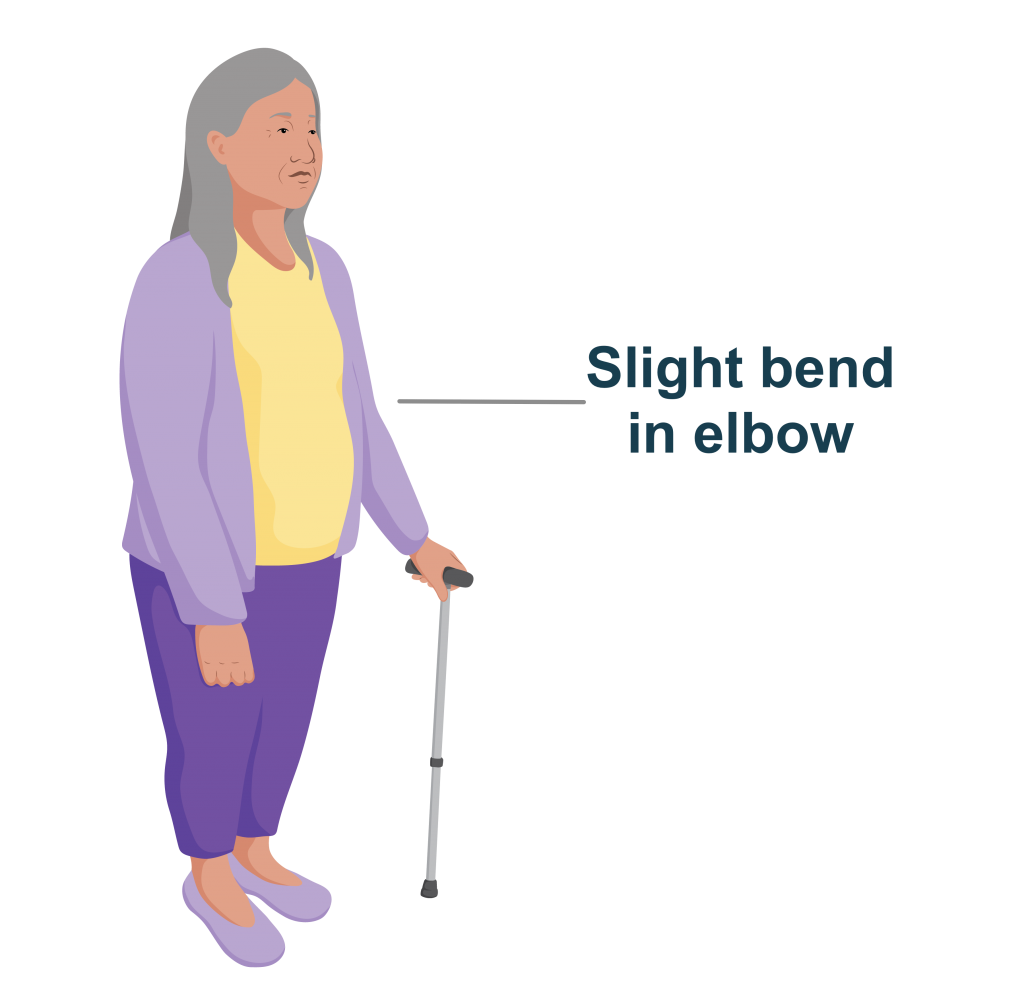
Correct fit: walking stick
After adjusting a walking stick for a person, check it fits as follows:
- When standing upright the person should have a slight bend in their elbow
Other adjustments
There are sometimes other minor adjustments that can be made to walking aids such as padding hand grips and axilla pads.
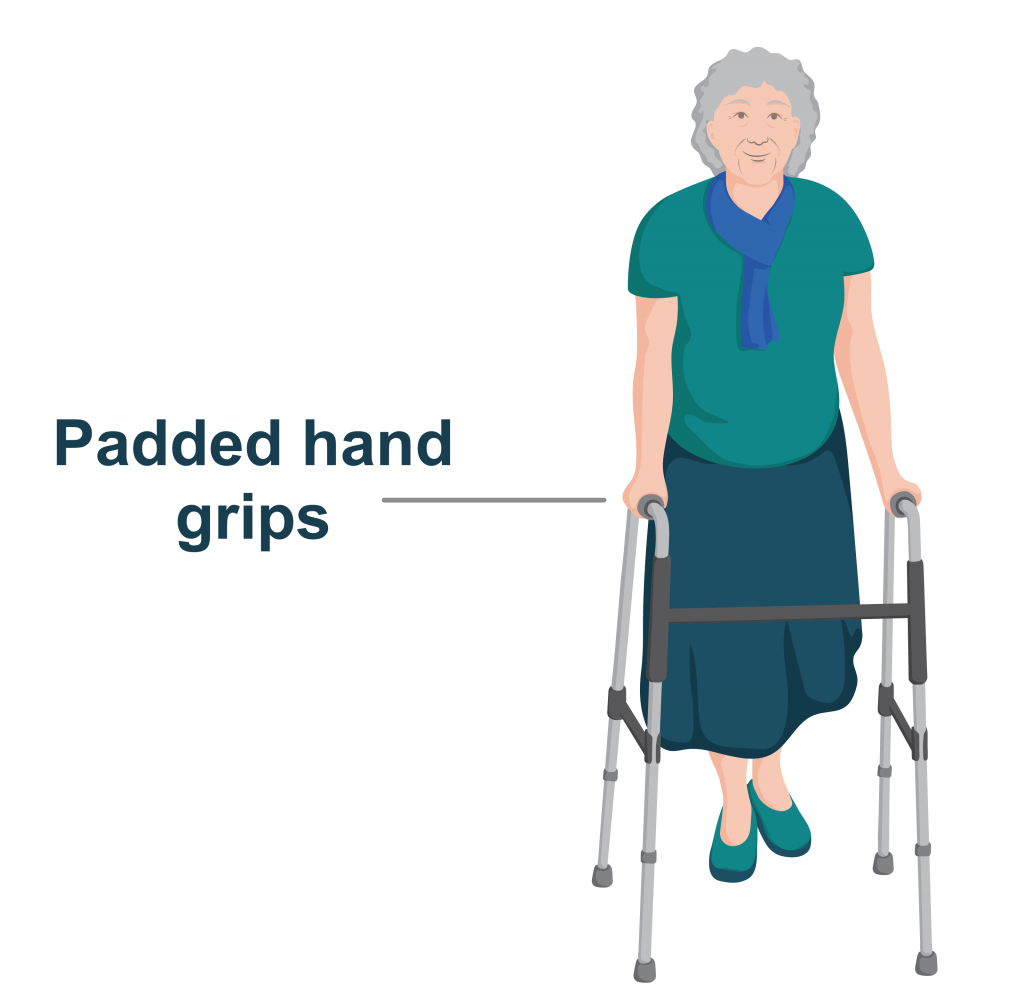
Remember Cali?
Cali found her hands hurt when she first used the walking frame. Now it is much easier to use after some foam padding was added to the hand grips.